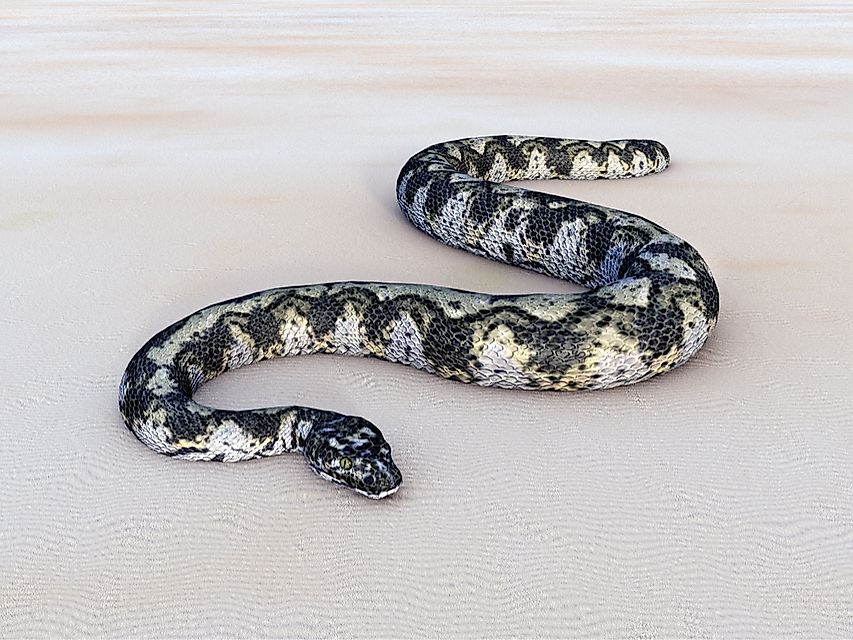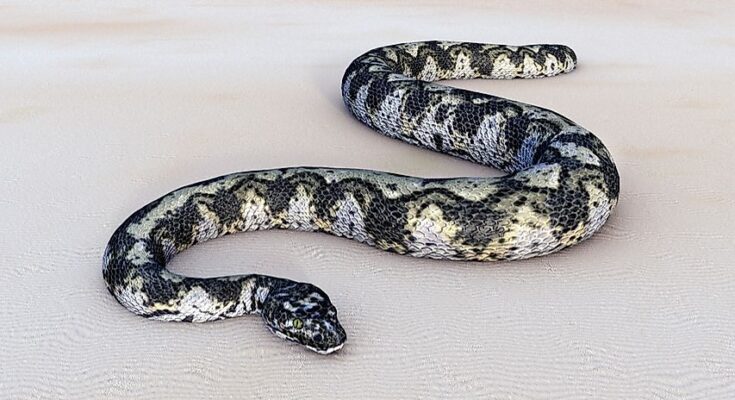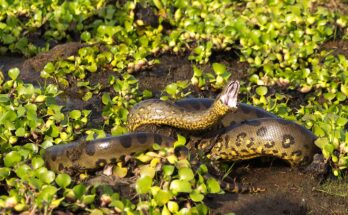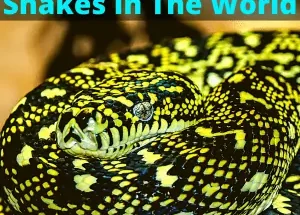Was Gigantophis the Largest Snake That Ever Lived?

How Long Have Snakes Existed?
Snakes have been slithering over the surface of the Earth for over 150 million years. Many paleontologists agree that these animals evolved from land-roaming lizards, although some theories suggest that snakes evolved from a now-extinct ocean-dwelling reptile. One of the principal reasons that the evolution of snakes continues to be an unanswered question is that the skeletons of snakes and their ancestors are generally small and easily broken, meaning the fossils available are incomplete. Not all snakes have a small size, however. Some of the largest snakes alive today have average lengths of between 17 and 30 feet, and even these impressive numbers do not represent the largest snake to have ever lived.
The Gigantophis Snake
Between 1901 and 2009, paleontology records indicated that Gigantophis was the largest snake to have ever existed on Earth. Fossil records show that this now-extinct species grew to between 30.5 and 35.1 feet in length on average. Gigantophis slid its way across the area between present-day Egypt and Algeria, in the northern Sahara region of Africa approximately 40 million years ago. Recently, Gigantophis fossils have also been found in present-day Pakistan. Continued studies of this species indicate that it may have existed for a longer period of time during the Eocene era than previously estimated. Additionally, its existence on Earth may have extended into the prior era, known as the Paleocene.
Researchers determined that the snake species was a type of constrictor, which means that it killed its prey by wrapping around it and squeezing. This practice is in contrast to venomous snakes, which bite and inject poison in order to kill their prey. Most paleontologists who have studied Gigantophis believe the species relied on medium-sized animals to fulfill their dietary needs. Some evidence, however, suggests that Gigantophis may also have killed and consumed the ancestors of modern-day elephants.
Was the Gigantophis the Largest Snake Ever?
Despite its enormous size, Gigantophis was not actually the largest snake to have ever lived. In 2009, paleontologists discovered a new species known as the Titanoboa, which translates to “Titanic Boa.” Fossil discoveries show that this extinct species grew to about 42 feet in length, making it at least 7 feet longer than Gigantophis. Titanoboa inhabited the northern areas of present-day Colombia in South America. Based on the only fossils that have been discovered, Titanoboa existed between approximately 58 and 60 million years ago, making it older than Gigantophis, and placing it toward the end of the Paleocene era. Its large size has also led to additional theories about the temperature during this era, suggesting it was hotter than previously theorized. Not all researchers, however, agree with this theory.
Continued research of this species indicates that its diet consisted mainly of fish, which is an uncommon characteristic of boa snakes. One theory to explain this behavior is that its large size would have made land travel quite cumbersome. To avoid this difficulty, Titanoboa became an avid swimmer and spent most of its active time in water. This giant snake species has been assigned to the Boidae family under the Serpentes suborder.



